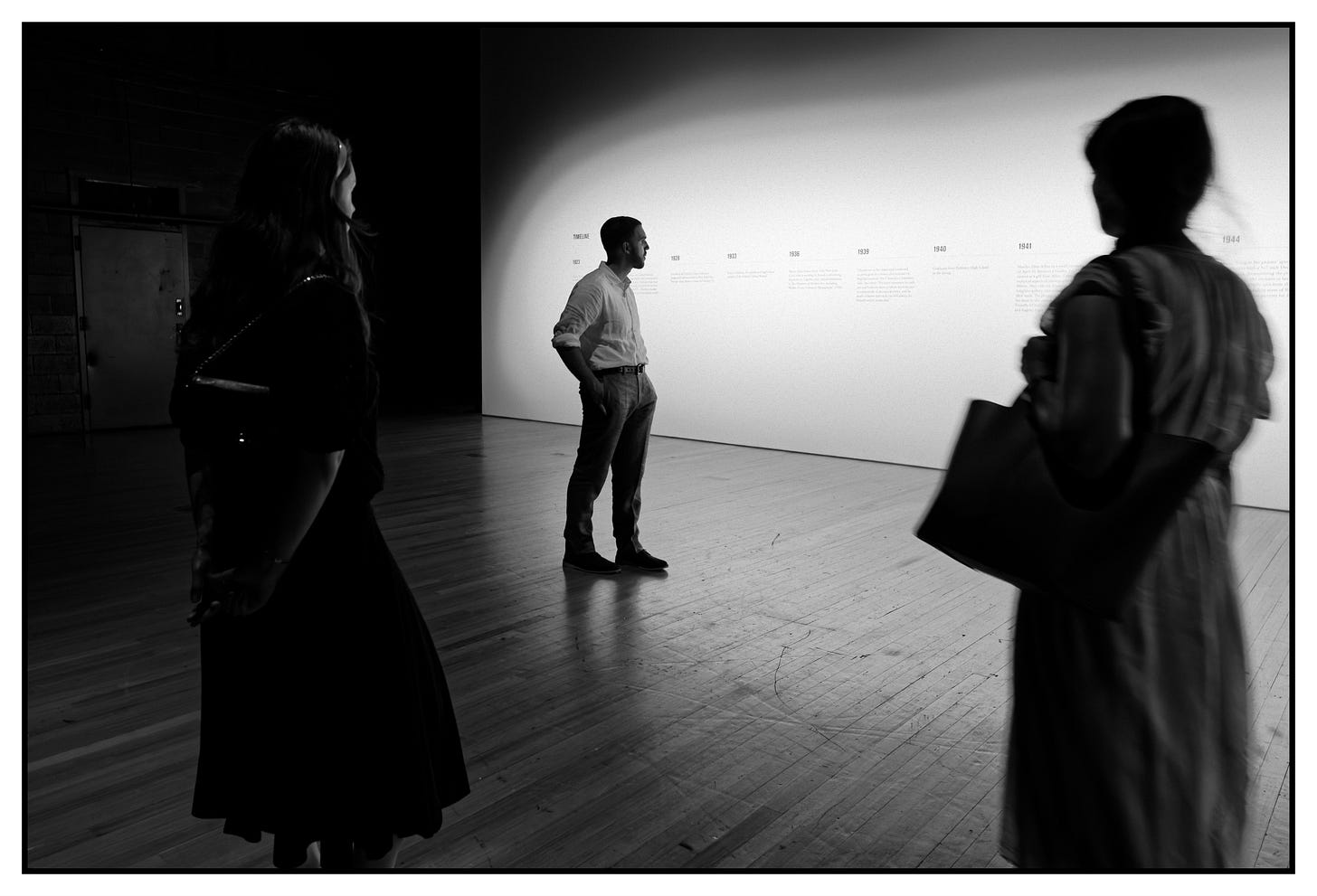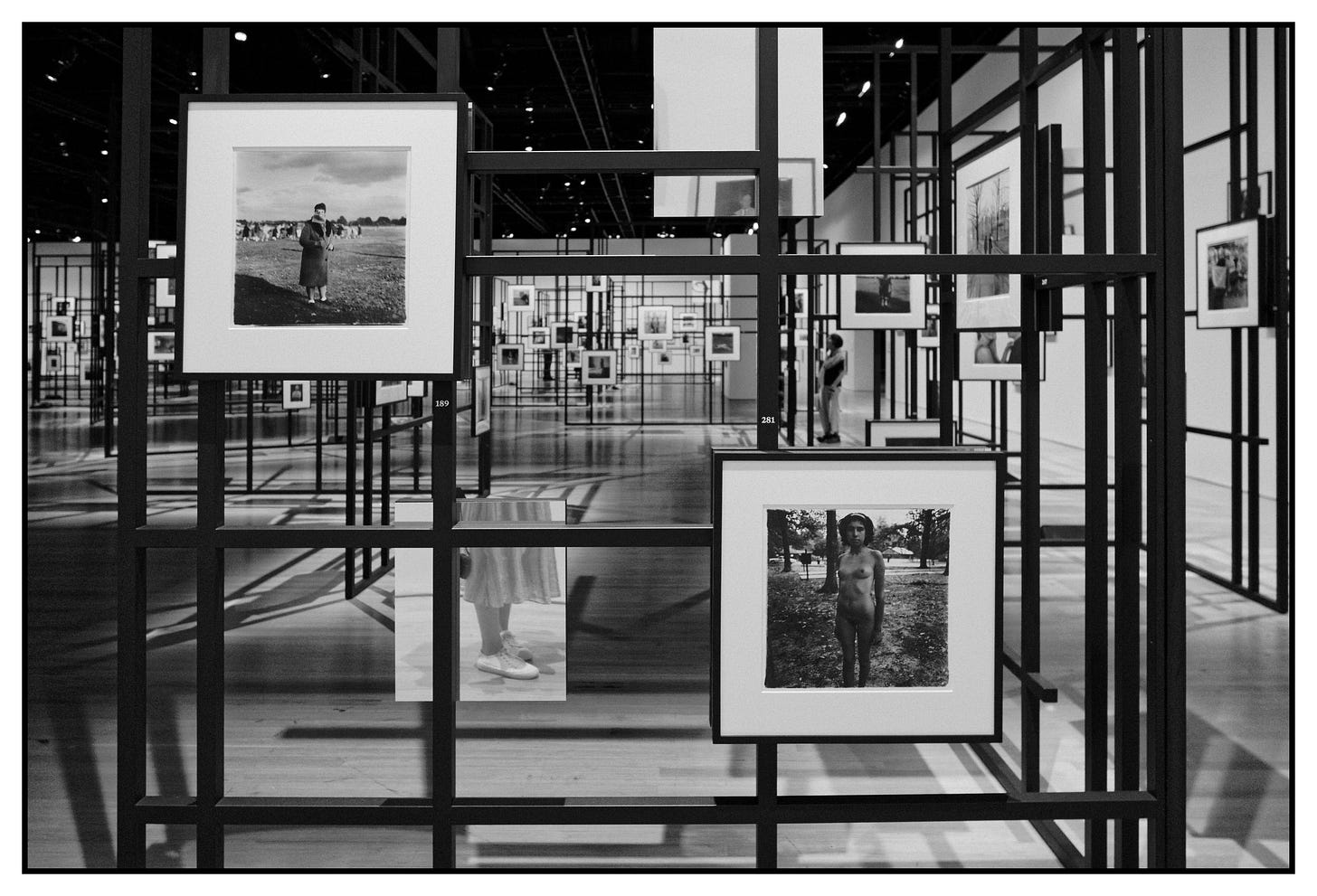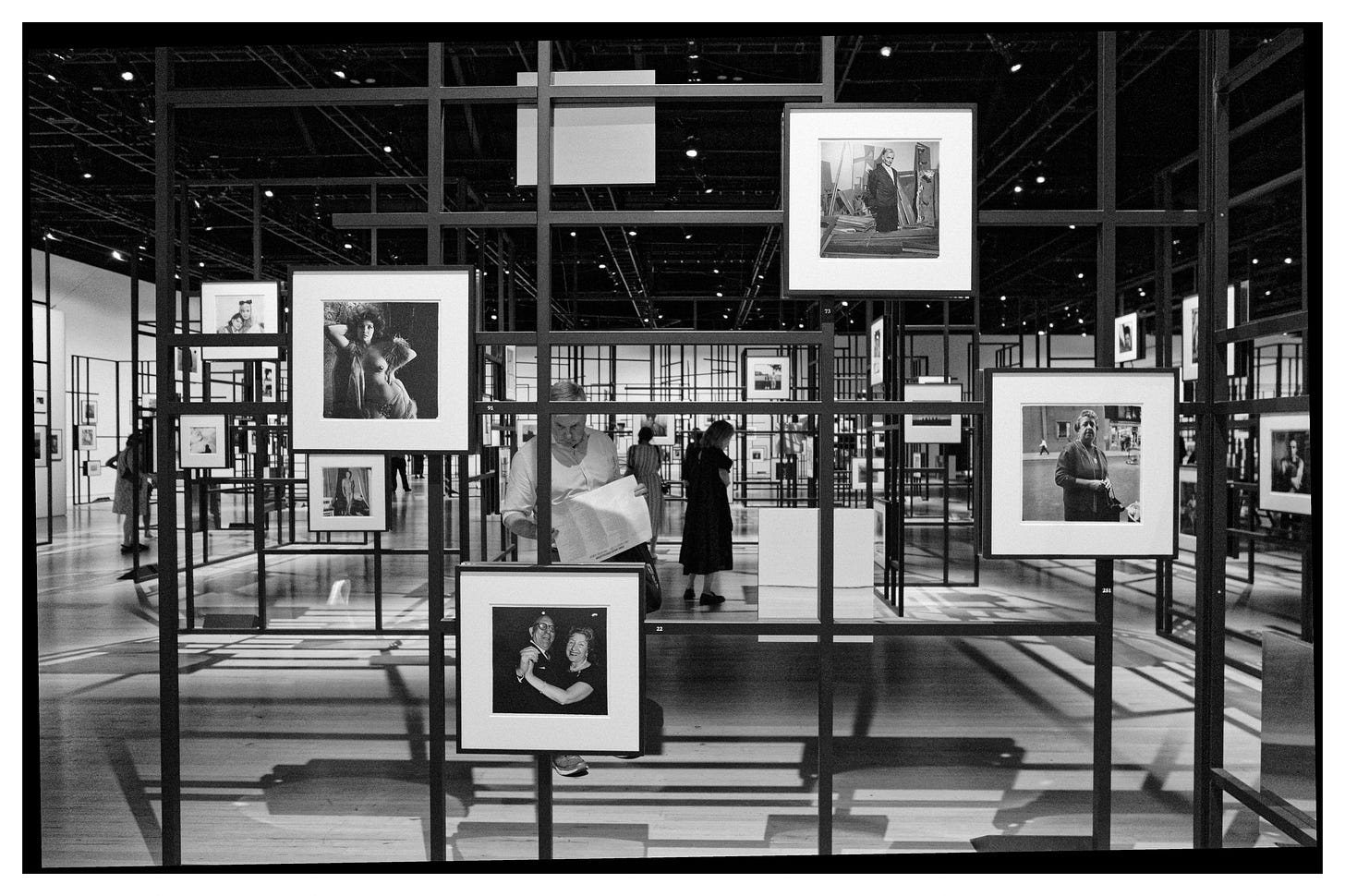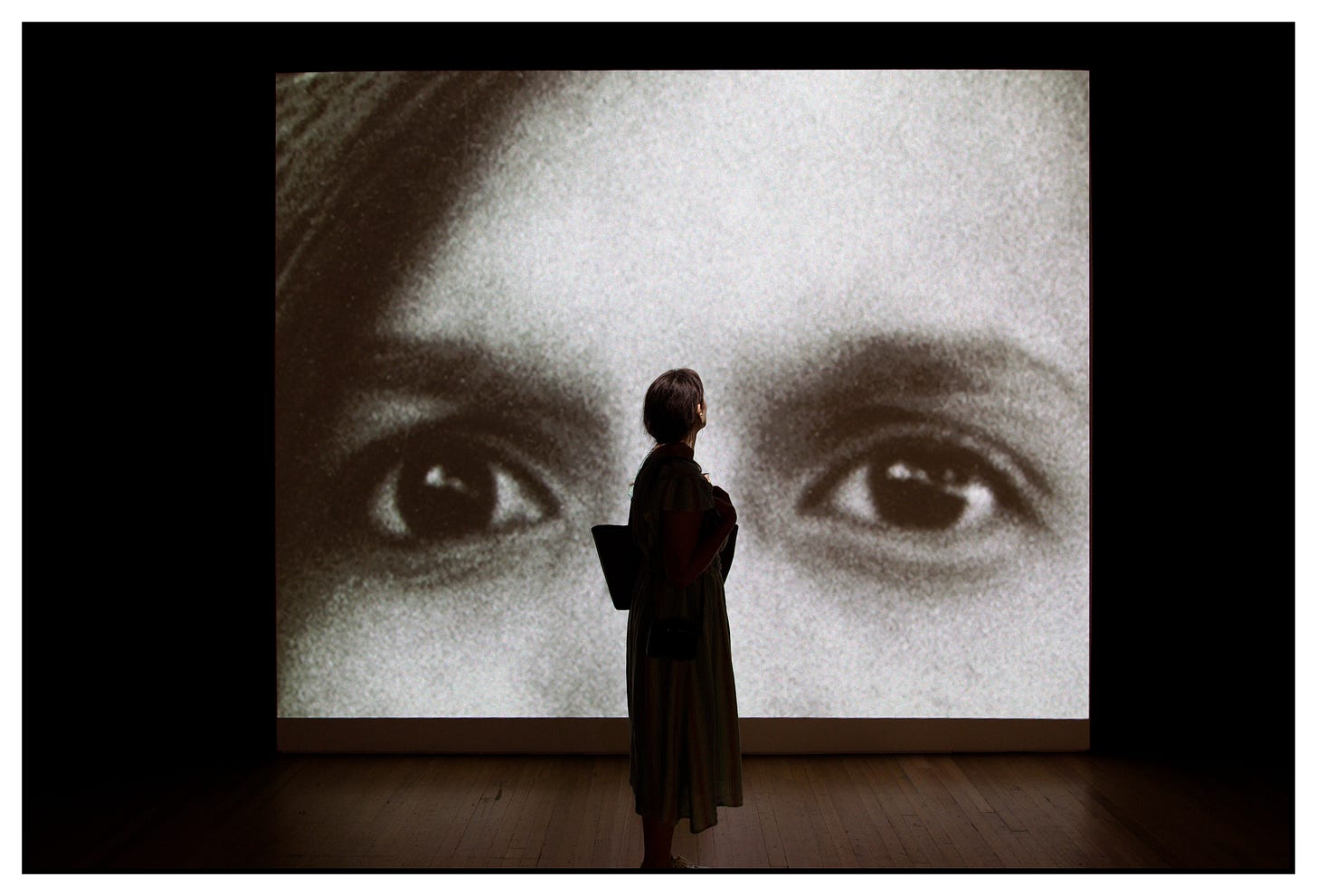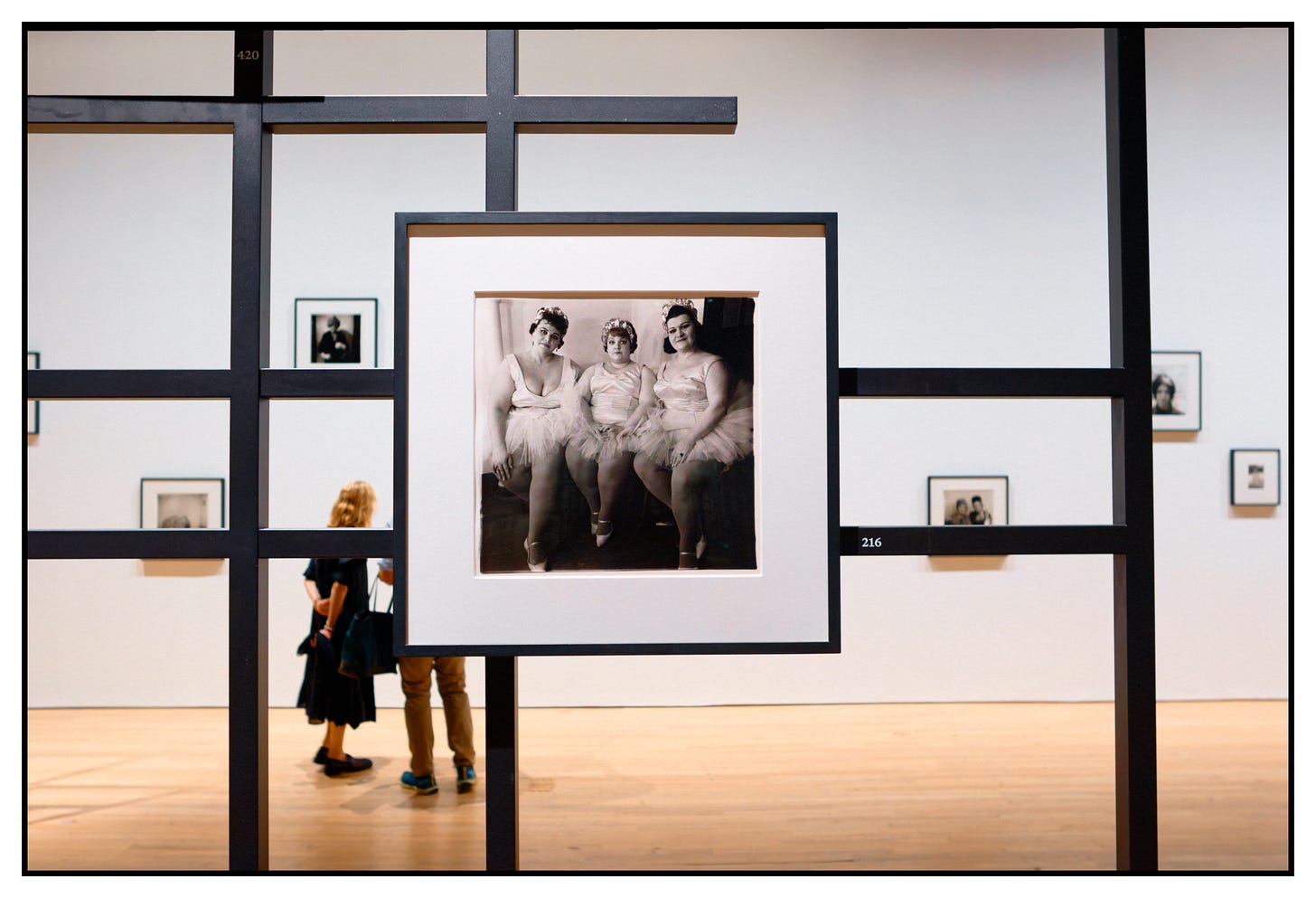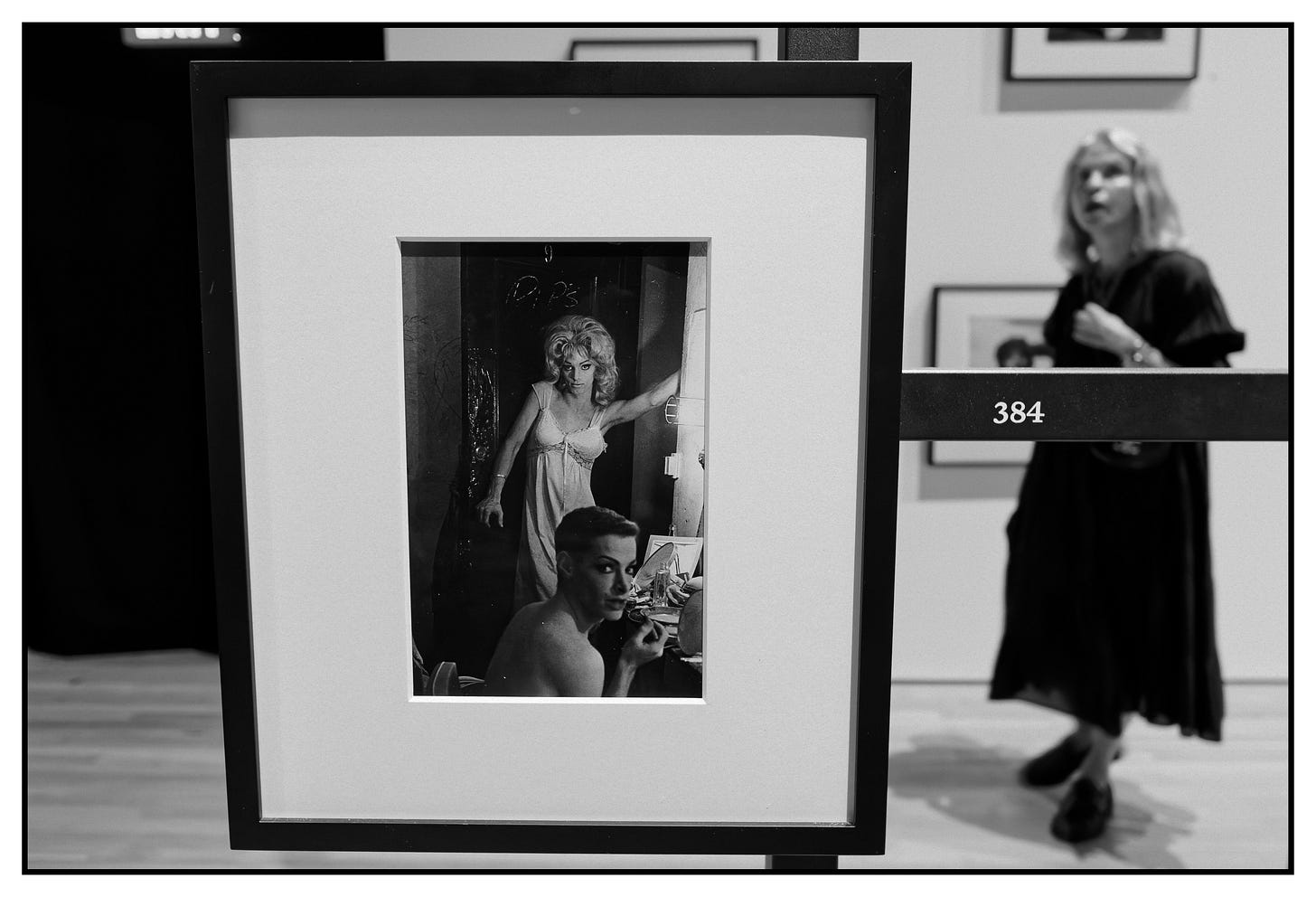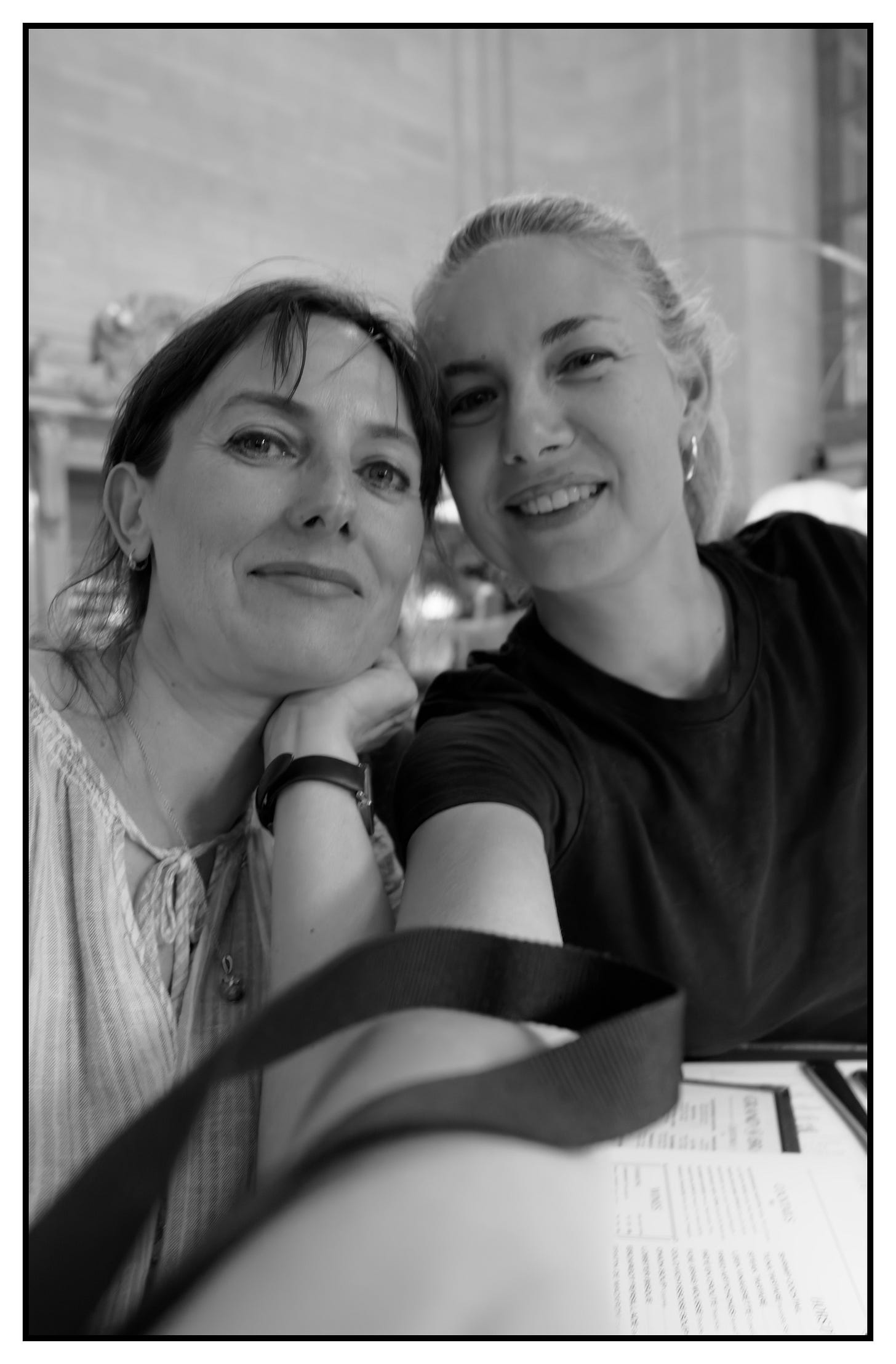Tonight in New York, I went to see the Diane Arbus: Constellation show at the Park Avenue Armory. I didn’t know what to expect but I remembered the space of the Armory being big, and anything exhibited there tending to feel impactful. But as my friend Monika and I entered the room, I felt a soft punch to the neck. A small choke. I was, quite literally, speechless.
The installation is stunning and massive. The concept of constellations is evident in the staging with pin pricks of light above shining down over a tapestry of minimal frameworks holding an array of differently sized images, backed onto mirrors that quietly reflect the work, as well as your own gaze, back at you.
Now I’m going to be candid and reveal a not so generous side of myself for a moment: I’ve never been a big Diane Arbus follower. I appreciated that she was a woman with a different voice and eye at a time when that was quite a brave act, but my superficial familiarity with her work led me to believe she was a bit of a sensationalist. Someone who aimed to bring out the most awkward, grotesque, or deformed aspects of her subjects for her own self-interested purposes.
I had enough self-awareness to realize that was probably an unfair judgment because I knew very little about her apart from the fact that she was a troubled woman who took her own life prematurely. And maybe that’s why I dismissed her. Because suicide and the “troubled artist” archetype has a way of flattening people. Of making their story feel tragic and one-dimensional, no matter what dazzling complexities came before. And so I had sort of written her off with disinterest and the grim self-satisfaction that I didn’t need to know more.
Walking through show tonight felt like the first time I had ever seen the work of this unknown photographer named Diane Arbus. Maybe because there was just so damn much of it on display, much of which I truly hadn’t seen before. But all of it, even the twins and the boy holding the grenade in Central Park, felt virginal and new.
Looking at it in this fresh context, I saw the work as curious and quiet, despite the theatrics often on display in the captured frames. There was humor, empathy, and some discomfort to be sure, but not cruelty. Not sensationalism. The people in her photographs aren’t being used; they’re being seen. Each image reads as a collaboration, even when the subject matter is extreme or surreal.
I was also left marveling at how she could do work like this and make it look so effortless and natural. I know if it were me behind the camera, I would’ve felt like an outsider, and that would’ve shown up in the photograph. But there’s none of that here. There’s a confidence in the work, but not arrogance or separateness. No matter what situation she was capturing, she seems to have earned enough trust to belong, to see from the inside instead of the other way around, and this is something I find awe inspiring.
It’s what I think connects such a broad and voluminous body of work despite her many technical shifts, from 35mm, 6x6 and 6x7 medium format, a variety of print tones and finishes. But her voice stays constant. You could show me a dozen of her prints in a pile of strangers’ work and I could probably still pick hers out. That’s the mark of an artist.
The installation itself also feels like an extension of Diane. It doesn’t tell you how to move or what to think. You wander, turn around, look up and down, and in the process, the images find you. The format is the farthest thing from linear, but neither is experience or memory, and I think that’s why it works so well.
I’m glad I went in without a plan. And I’m really glad I went with a friend I could talk about it with afterward. If you’re in New York before the show closes, I recommend you do the same.




